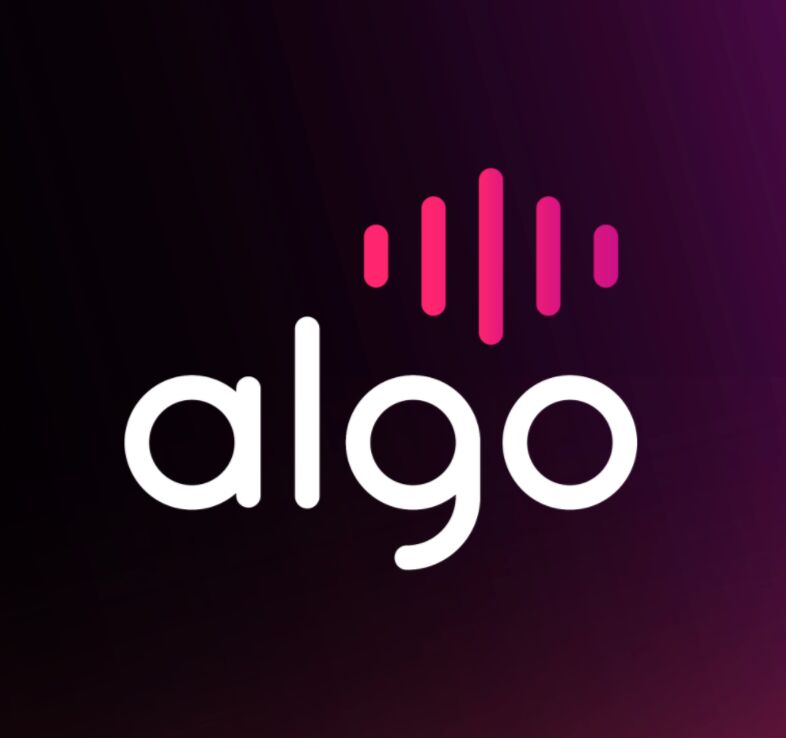Imagine a world where your forecasts are always spot-on, where you consistently meet customer demand without the burden of excess inventory. That’s the power of effective demand planning.
Demand planning is the art and science of predicting future demand, allowing you to optimize inventory, boost sales, and ultimately, enhance your company’s bottom line.
But mastering demand planning requires more than just intuition. It demands a deep understanding of forecasting techniques, a keen eye for data analysis, and the ability to adapt to ever-changing circumstances.
As we always put it, “Demand planning isn’t just about predicting the future; it’s about shaping it. By proactively anticipating demand, you can steer your supply chain towards greater efficiency and resilience.”
You need to be able to navigate the inherent uncertainties of the market – from seasonal fluctuations and economic shifts to unexpected disruptions like natural disasters or global crises.
In this blog post, we’ll equip you with the knowledge and tools to excel in demand planning. We’ll explore key forecasting techniques and reveal how you can transform your supply chain into a well-oiled, demand-driven machine.
Let’s dive in!
Key Demand Planning Techniques
Navigating the complexities of supply chain management requires a keen understanding of future demand. Effective demand planning relies on utilizing various forecasting techniques to reduce uncertainty and optimize resource allocation. Here’s a breakdown of key methods:
Quantitative Techniques: Data-driven methods for short- and long-term forecasting
These techniques harness the power of historical data and statistical models to provide a quantitative foundation for predicting future demand. Think of them as your data-driven crystal ball, revealing potential future outcomes with a degree of statistical confidence. By identifying patterns and trends hidden within your data, you can make more informed decisions and proactively manage your supply chain.
Here are three key quantitative techniques every demand planner should know:
Trend Projection: Riding the Waves of Historical Data
Trend projection analyzes historical data to identify recurring patterns and trends, such as seasonality, growth rates, or cyclical fluctuations. By extrapolating these trends, you can forecast future demand and proactively adjust your production, inventory, or shipping schedules.
Exponential Smoothing: Giving More Weight to the Present
In today’s dynamic market, recent data often holds the key to accurate short-term forecasting. Exponential smoothing assigns greater weight to more recent data points, making it ideal for capturing shifts in demand and adapting to rapidly changing market conditions.
Regression Analysis: Uncovering the Hidden Connections
Regression analysis delves deeper into the factors that influence demand. This technique models the relationship between demand and other variables, such as pricing, promotions, economic indicators, or even weather patterns. By understanding these relationships, you can forecast how changes in these variables might impact future demand.
Qualitative Techniques: Insight-based approaches, especially useful for new products or markets
When launching new products or entering emerging markets – historical data can be scarce. This is where qualitative techniques shine. They leverage human expertise, market knowledge, and customer insights to fill the gaps where data might be lacking. Consider these methods your “human intelligence” network, providing crucial subjective assessments to guide your demand planning process.
Here are some powerful qualitative techniques to add to your demand planning toolkit:
Expert Opinion: Leveraging the Wisdom of the Crowd
In situations where data is limited, tap into the experience and intuition of industry veterans, seasoned managers, and subject matter experts. Their collective wisdom can provide invaluable insights into potential demand, market trends, and customer behavior.
Market Research: Listening to the Voice of the Customer
Go straight to the source and gather firsthand insights from your target audience. Conducting surveys, focus groups, and market polls can help you understand customer preferences, needs, and pain points, enabling you to anticipate demand for new or innovative products.
Delphi Method: Achieving Consensus Through Structured Dialogue
The Delphi method provides a structured approach to gathering and consolidating expert opinions. Through a series of questionnaires and feedback rounds, experts anonymously share their insights and refine their judgments based on the collective wisdom of the group. This iterative process helps achieve consensus and reduce the influence of individual biases.
Scenario Planning: Preparing for the Unexpected
Scenario planning involves creating a set of plausible future scenarios and analyzing their potential impact on demand. This technique helps you prepare for different possibilities, identify potential risks and opportunities, and develop flexible strategies that can adapt to changing circumstances.
Example: A global apparel retailer uses scenario planning to prepare for potential disruptions to its supply chain. They develop three scenarios:
“Smooth Sailing”: Global trade flows smoothly, consumer demand remains stable, and there are no major disruptions.
“Choppy Waters”: Rising geopolitical tensions lead to increased tariffs and trade restrictions, impacting the flow of goods and increasing costs.
“Stormy Seas”: A major natural disaster disrupts production in a key manufacturing region, causing significant supply shortages.
For each scenario, the retailer analyzes the potential impact on demand for different product categories, identifies potential bottlenecks in their supply chain, and develops contingency plans to mitigate risks. This includes diversifying sourcing, adjusting inventory levels, and exploring alternative transportation routes.
How to Choose the Right Demand Planning Technique
Selecting the right demand planning technique is like choosing the right tool for a job – it depends entirely on the task at hand. Several factors influence this decision:
Business Context and Goals: What are you trying to achieve with your demand plan? Are you forecasting for a new product launch, managing seasonal demand fluctuations, or optimizing inventory for a mature product? Harvard Business Review offers valuable guidelines on aligning forecasting techniques with specific business contexts and goals.
Data Availability: Do you have access to historical sales data, market trends, and other relevant information? Some techniques, like quantitative methods, thrive on vast amounts of data, while others, like qualitative approaches, can be effective even with limited data or in uncertain environments.
Supply Chain Complexity: How intricate is your supply chain network? For simpler supply chains, basic forecasting methods might suffice. However, more complex networks with multiple variables and dependencies may benefit from AI-driven methods or hybrid approaches that combine various techniques.
At Algo, we understand the complexities of managing demand for a global retailer like Target. Their supply chain spans multiple regions and encompasses a vast array of products, from fashion and toys to homewares and health & beauty. To optimize their demand planning process, Target implemented our configurable platform, which leverages the power of the MS Azure Intelligent Cloud to execute AI/ML forecasting and create virtual allocations. Learn more about Target’s journey.
Leveraging AI and Advanced Tools for Better Demand Planning
Artificial intelligence (AI) is revolutionizing demand planning, ushering in an era of unprecedented accuracy and agility. AI-powered models, like those offered by Algo, go beyond traditional methods by integrating both quantitative and qualitative data. This means capturing the nuances of human judgment alongside the power of data analysis, leading to more precise forecasts that adapt to real-time changes in the market.
Here’s how AI is transforming demand planning
Real-time Forecasting: Traditional forecasting methods often rely on historical data, which can be quickly outdated in today’s dynamic environment. AI tools analyze real-time data streams – social media trends, weather patterns, news events, and more – to identify emerging patterns and adjust forecasts dynamically. This reduces forecast errors and enables proactive responses to market shifts.
Continuous Learning: Machine learning models continuously learn and adapt. As new data becomes available, these models refine their algorithms, improving forecast accuracy over time. This self-learning capability allows businesses to stay ahead of the curve and proactively adjust to evolving demand patterns.
Enhanced Decision-Making: By providing accurate, real-time insights, AI empowers businesses to make data-driven decisions across the supply chain. This includes optimizing inventory levels, streamlining production schedules, and proactively managing logistics.
Ready to Elevate Your Demand Planning
“Don’t just react to demand; anticipate it. By mastering the art of demand planning, you can transform uncertainty into a source of competitive advantage.”
Accurate demand planning is crucial for reducing uncertainty and optimizing supply chain performance. By choosing the right techniques and leveraging high-quality data, you can improve forecast accuracy and ensure you have the right resources in the right place at the right time. AI is playing an increasingly important role in demand planning, enabling more precise and dynamic forecasts.
Take your demand planning to the next level with Algo.
Algo is a leading provider of AI-powered supply chain planning solutions. Our platform helps businesses of all sizes optimize their demand planning, inventory management, and allocation processes.
We leverage the latest advancements in artificial intelligence and machine learning to provide accurate, real-time insights that drive better decision-making. Our solutions are designed to be flexible and scalable, adapting to the unique needs of each customer.
Request a demo with Algo.
About the author

Karen McNaughton
Karen is the Vice President of Global Marketing at Algo, where she leads strategies to enhance brand awareness and demand generation for the company’s supply chain intelligence platform. With over twenty years of experience in senior marketing roles at various SaaS technology organizations, Karen brings extensive expertise in leading global marketing teams and executing go-to-market strategies.



